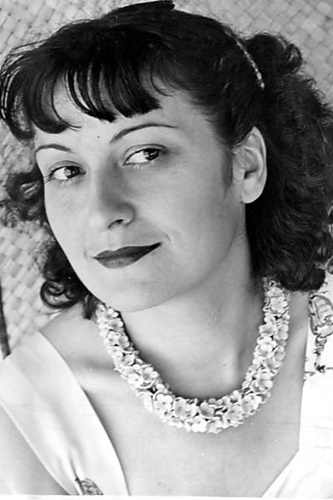This year’s Venice Architecture Biennial has awarded the late Modernist architect Lina Bo Bardi with the Special Golden Lion for Lifetime Achievement award.
The prize, which will be bestowed in memoriam to Bo Bardi at the seminal 17th annual edition of the international festival on May 17th, is given in recognition of her illustrious career and “powerful buildings.” You can read more about Bo Bardi, and how her prizewinning work relates to this year’s festival theme, at DeZeen here.
Meanwhile, for those who are unfamiliar with the Brazilian visionary and her impact on design today, we’ll be taking a closer look at the life and work of Lina Bo Bardi:
The Life of Lina Bo Bardi
Lina Bo Bardi was born Anchillina Bo in Rome, Italy on December 5, 1914. Even at a young age, Bo Bardi demonstrated an affinity for art; yet when she made the decision to pursue architecture as a career, her father struggled to be supportive. Nevertheless, she went on to study at the Rome College of Architecture. Post-graduation in 1939, she moved to Milan, where she worked with architect Carlo Pagani.
Just three years later at the age of 28, Bo Bardi opened her own architectural studio. During wartime, work was hard to come by, and she found additional ways to supplement her income by creating magazine illustrations. When her studio was tragically destroyed by an aerial bombing in 1943, the event pushed Bo Bardi to become more involved with the Italian Communist Party. Alongside Pagani and photographer Federico Pallatani, she travelled the country and documented wreckage of the country brought on by the war.
When Bo Bardi eventually married in 1946, she and her husband, art critic and journalist Pietro Maria Bardi, found post-war life in Italy difficult due to their involvement in the resistance. They relocated to Brazil and together co-founded Habitat, a magazine named for Bo Bardi’s idea that the ideal interior was a “habitat” designed to maximize human potential. Radicalized by her accumulated experiences, Bo Bardi spent most of her life promoting the social and cultural potential of architecture and design.

The Work of Lina Bo Bardi
Brazil had a profound impact on Bo Bardi’s creative thinking. In the same year that Bo Bardi became a naturalized Brazilian citizen (1951), she also completed her first built work.
The “Glass House” — or “Casa de Vidro” — was one of her most iconic architectural feats, as well as her own private residence. Incorporating her understanding of a global Modernist with an appreciation for the natural Brazilian landscape, the structure was one of the earliest examples of reinforced concrete in domestic architecture. She was inspired by both Mies van der Rohe’s Farnsworth House and Charles and Ray Eames’ Case Study House No. 8.

São Paulo. Credit: Wilfredor on Wikimedia Commons made available under the Creative Commons CC0 1.0 Universal Public Domain Dedication
Bo Bardi’s impressive career also included designing the São Paulo Museum of Art, abbreviated as MASP, where her husband served as curator. In designing the museum, Bo Bardi coined the term “Poor Architecture” — a style she considered as divorced from cultured intellectual pretentiousness. She worked on other vital cultural and community centers in the region as well, including the Solar do Unhão (a sugar mill restored to be a museum of modern art) in Salvador, and Centro de Lazer Fábrica da Pompéia (a drum factory turned community center) and The Teatro Oficina (a burnt office building turned theater), both in São Paulo, Brazil.
In addition to being an architect, Bo Bardi was also engaged in scenery production, art, furniture and graphic design. She produced over 6,000 drawings and founded a furniture studio, the Studio de Arte e Arquitetura Palma. Her iconic Bowl Chair is even available for purchase today. Though Bo Bardi passed in 1992, leaving many unfinished projects in her wake, her legacy lives on, as evidenced by the Venice Architecture Biennial’s acknowledgement.

